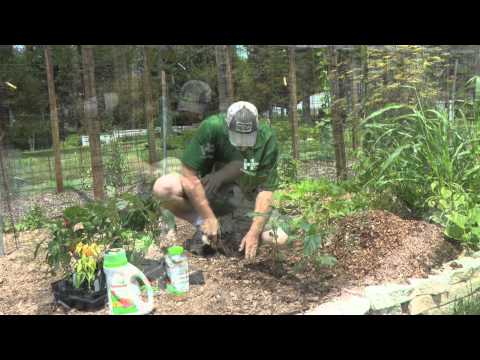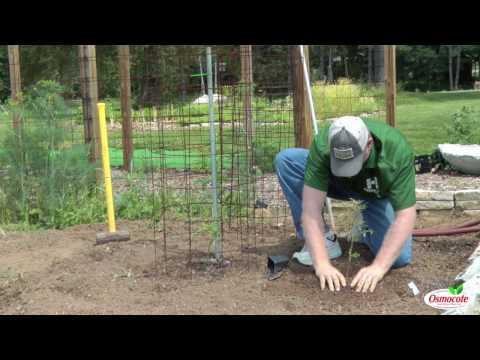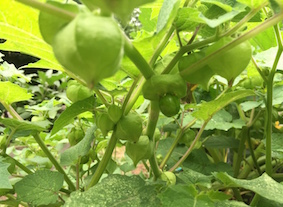How to Grow Tomatillos
If I’m making salsa verde (a green salsa), I use my homegrown tomatillos (Physalis philadelphica), which produce a bumper crop every summer. Although they may look like a tomato, and they prefer the same growing conditions, tomatillos are a type of ground cherry and have a papery husk. I grow both the green and purple varieties. They taste the same, but I like the way the diced purple tomatillos look in a bowl of salsa. The harvest begins about 60 days after transplanting and continues until the first fall frost. Tomatillos are ripe when the papery husk is dry or has pulled away to reveal the plump fruit.
How to Grow Scallions
Scallions (green or bunching onions) are grown for their green leaves, which can be white, red or purple at the base. Some produce a very small bulb. I use the leaves and the chopped bulbs in my salsas. Seeds are sown in early spring outdoors and plants are harvested in 50 to 60 days. As with other vegetables mentioned here, scallions need full sun and well-drained soil with regular moisture. Harvest the plants when the leaves are about 6 to 8 inches tall to avoid the Sulphur taste found in many store-bought green onions.
How to Grow Jalapeño and Serrano Peppers
Peppers are tender, warm-season vegetables that thrive in well-drained, fertile soil and full sun. I use a water-soluble “starter” fertilizer when transplanting to get them off to a good start. Plants are set 18 to 24 inches apart in a vegetable bed. I also grow individual plants in 10-gallon pots (with drainage holes) that are filled with soilless potting mix containing granular fertilizer. Uniform moisture is essential, so pepper plants should be watered every few days during hot, dry periods. Like tomatoes, pepper plants do not tolerate frost, or cold, wet soil. When night temperatures are 50° to 55°F, the plants grow slowly, the leaves may turn yellow and the flowers drop off. In my Zone 5 garden, I wait to plant them until late May when the danger of frost has passed. Don’t be in a hurry to pull fruits off the plant, which can crack the stems. Use scissors or pruning shears.

Peppers Photo by Greg Moroz
How to Grow Cilantro
This is one of the few annual herbs that is quick to produce flowers and seeds — and then the plant dies! It’s a common lament of cilantro-loving gardeners. For that reason, I always grow it from seed, which is much cheaper than constantly buying and replacing plants. Frequent harvesting of the leaves can help slow the flowering process. And, sowing seeds every couple of weeks extends my harvest. Grown from seed, cilantro is ready for cutting in about 50 days. Give the plants full sun and well-drained soil. We grow cilantro in the herb garden as well as in pots. If your cilantro plant does flower, let it go to seed, which is called coriander. Look for varieties marked “slow to bolt,” which means slow to flower and a longer time to harvest.
How to Grow Garlic
In my Zone 5 garden near Chicago, I plant garlic cloves in the fall and harvest the heads of garlic in midsummer. Choose a spot that receives at least 6 hours of sun from spring through summer. Plant the cloves in fertile, well-drained soil, placing them 3 to 4 inches apart and 2 to 3 inches deep. A raised bed works well for garlic because it warms up quickly in the spring and tends to drain quickly after a rain. By summer, the leaves begin to turn yellow and fall over, a sign the garlic is dry and ready for harvest. In the Chicago area, harvest time is usually in July.







